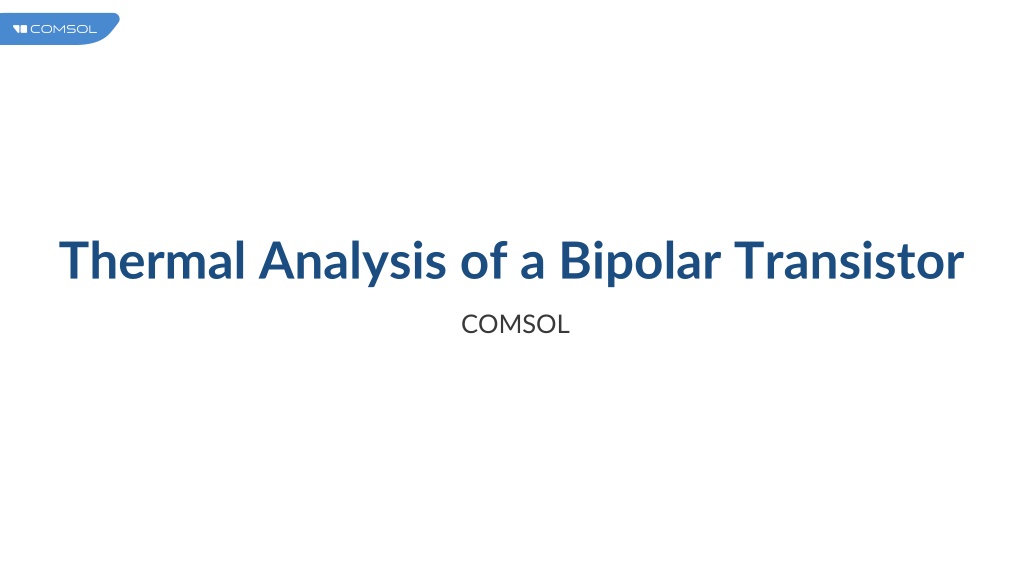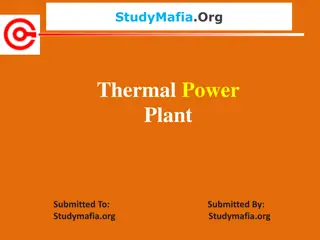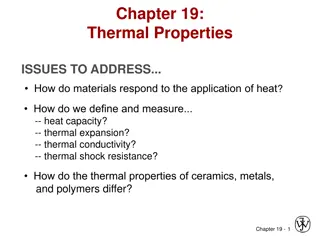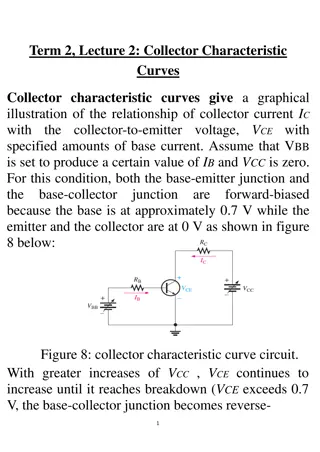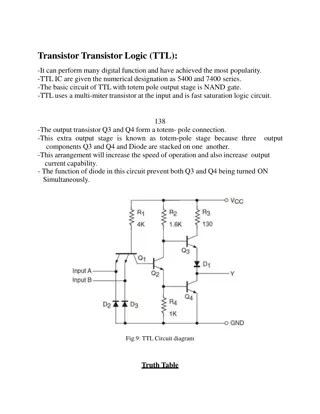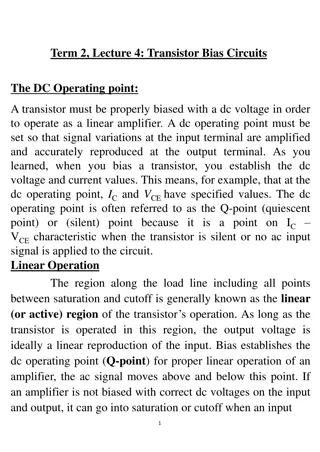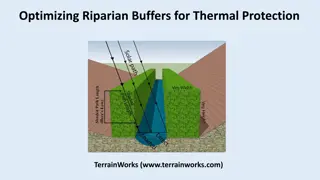Thermal Analysis of a Bipolar Transistor Using COMSOL
This model utilizes a COMSOL simulation to analyze the thermal behavior of a bipolar transistor. The heat transfer within the device is calculated to determine the temperature distribution. Various plots, such as the Gummel plot and current gain curve, illustrate the collector and base currents as functions of base voltage. The semiconductor heat source for specific base and collector voltages is also depicted.
Download Presentation

Please find below an Image/Link to download the presentation.
The content on the website is provided AS IS for your information and personal use only. It may not be sold, licensed, or shared on other websites without obtaining consent from the author.If you encounter any issues during the download, it is possible that the publisher has removed the file from their server.
You are allowed to download the files provided on this website for personal or commercial use, subject to the condition that they are used lawfully. All files are the property of their respective owners.
The content on the website is provided AS IS for your information and personal use only. It may not be sold, licensed, or shared on other websites without obtaining consent from the author.
E N D
Presentation Transcript
Section 1 In this model, the heat transfer in solids interface is added and configured to calculate the temperature distribution throughout the device The Semiconductor interface provides the heat source used in the heat transfer in Solids interface; whilst the temperature distribution that is used in the semiconductor interface is calculated by the heat transfer in solids interface
Model Definition Geometry 1
Model Definition Semiconductor
Model Definition Heat Transfer in Solids
Results The figure is the Gummel plot, which shows the collector and base currents, plotted on a logarithmic y-axis as a function of the base voltage The two datasets are nearly identical because the temperature throughout the device in the fully coupled study does not deviate more than a few degrees from the T0 value used in the initial study Gummel plot showing the collector and base currents as a function of base voltage
Results The figure shows the current gain curve, which is the ratio of the collector to base current, as a function of the base voltage The small magnitude of the base current for low values of the collector current lead to some numerical instability for collector currents less than approximately 10- 10 A Again, the two datasets are similar due to the small temperature difference between the initialization study and the fully coupled study Current gain curve showing the ratio of collector to base current as a function of base voltage
Results The figure shows the semiconductor heat source This is the heat source that is used by the heat transfer in solids interface to calculated the temperature distribution throughout the device Semiconductor heat source for a base voltage of 1.1 V and a collector voltage of 3 V
Results The figure shows the voltage and temperature throughout the device The top surface plot shows the voltage distribution, along with the electron and hole currents as black and white arrow plots, respectively As expected, the hole current is between the base and emitter contacts, without entering the collector region, whilst the electron current is predominantly between the collector and emitter Voltage and temperature for a base voltage of 1.1 V and a collector voltage of 3 V. Top panel: Voltage distribution with electron and hole currents shown in black and white arrows. Bottom panel: Corresponding temperature throughout the device, along with the heat flux shown as arrows The lower surface plot shows the corresponding temperature throughout the device, along with an arrow plot which shows the heat flux
Results The temperature is highest between the emitter and collector contacts, at the depth of the junction between the base and collector regions This is the expected result as the majority of the current flows between these two contacts, and the base-collector junction creates a region with higher resistance than the surrounding bulk material Thus the Joule heating, which is the predominant semiconductor heating mechanism in this model, is largest in this location Semiconductor heat source for a base voltage of 1.1 V and a collector voltage of 3 V
Results The heat flux also behaves as expected, as it flows from the peak temperature toward the contacts, which are the only boundaries that allow heat transfer in this simple model Semiconductor heat source for a base voltage of 1.1 V and a collector voltage of 3 V
